Submitted by WA Contents
Croatian Pavilion focuses on different models of cohabitation and Lonja wetlands at Venice Biennale
Italy Architecture News - May 25, 2023 - 15:46 3321 views
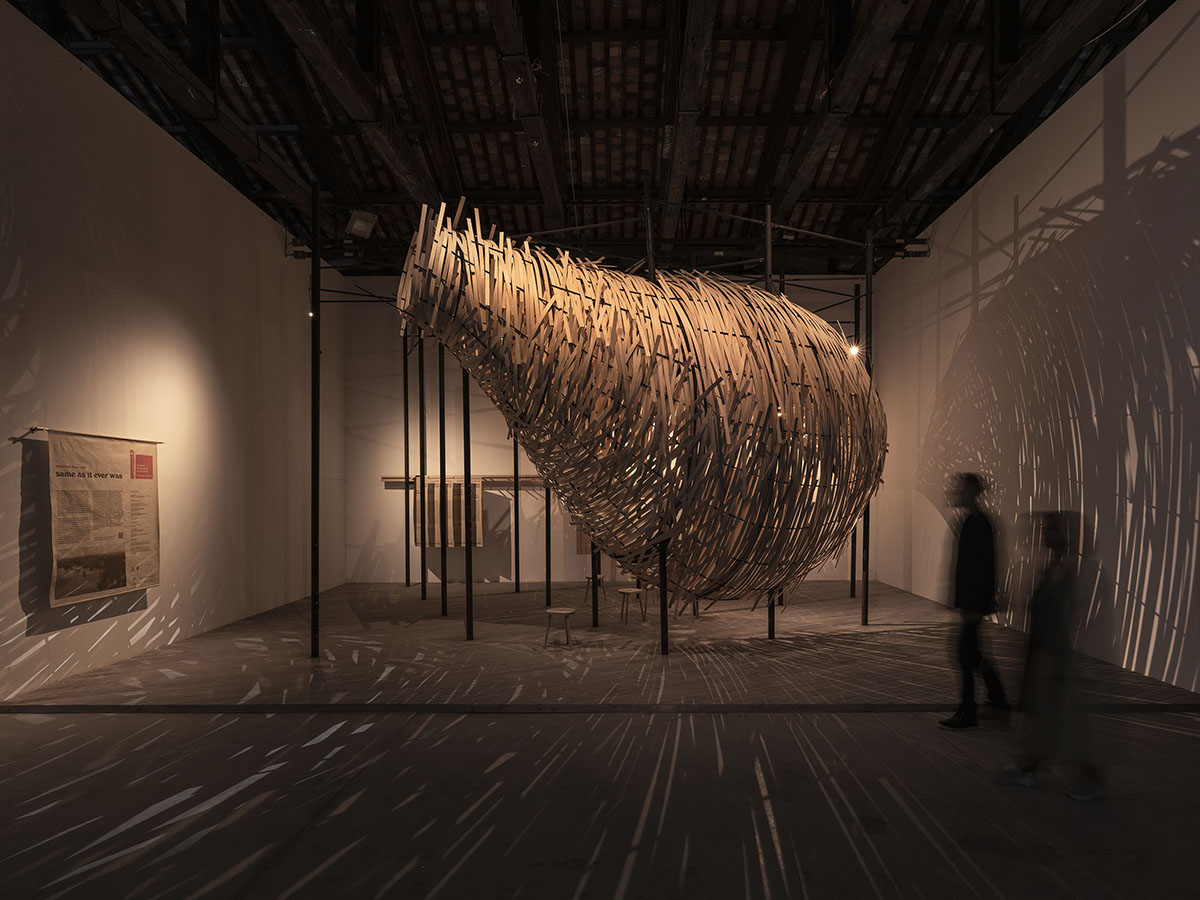
The Croatian Pavilion has installed a seed-shaped sculpture that aims to focus on different models of cohabitation and Lonja wetlands at the 2023 Venice Architecture Biennale.
The pavilion, themed Same as it Ever Was, emerges as an ode to the ambiances of coexistence of the wild and the domesticated, natural and fabricated, inanimate and living.
While the pavilion is curated by Mia Roth and Tonči Čerina, the editorial and design team is comprised of Mia Roth, Tonči Čerina, Luka Fatović, Vedran Kasap, Ozana Ursić, Niko Mihaljević, Ivica Mitrović.
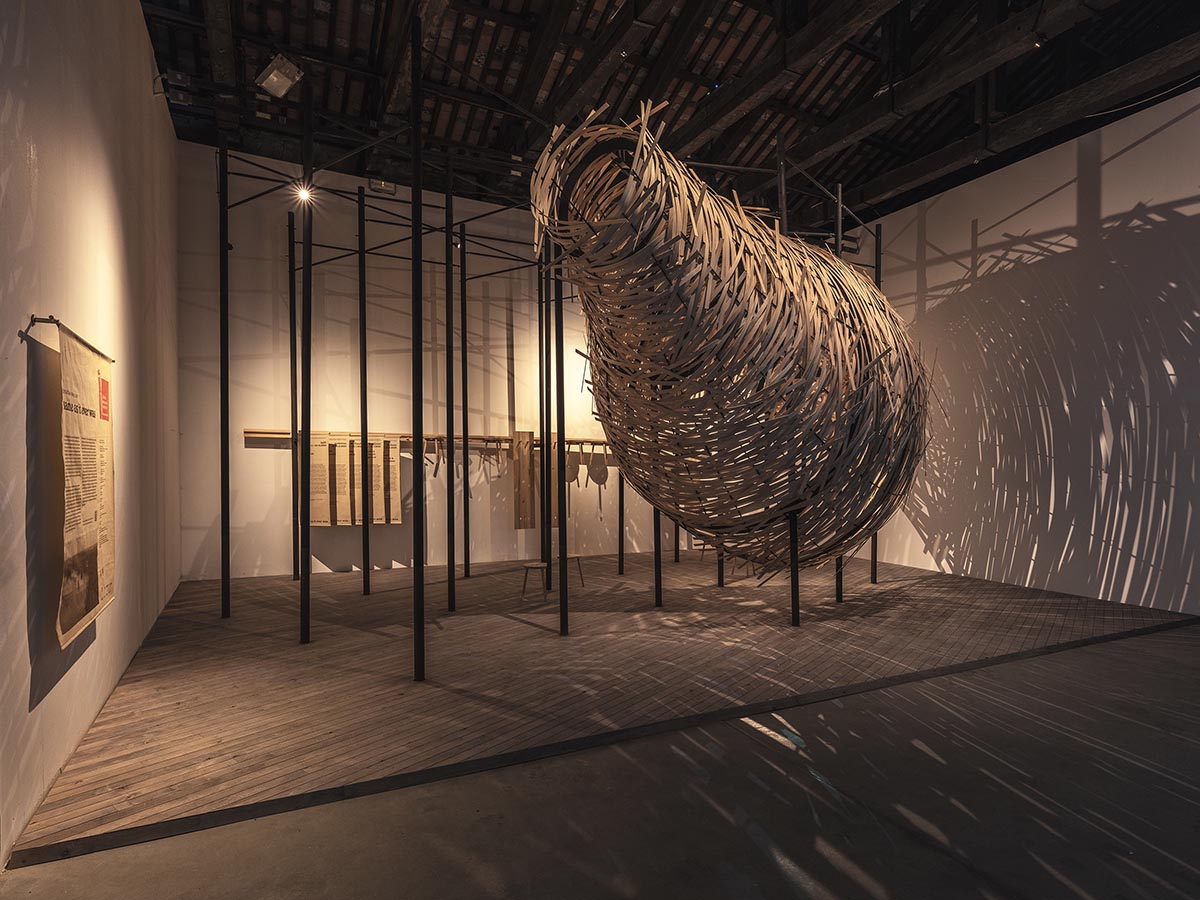
Situated in the Arsenale, the sculptural installation forms a dynamic backdrop to host a discursive program of events, alongside texts, workshops and talks that can explore the topics further. The talks and events will be produced and continue during the Biennale and at various locations in Croatia, Slovenia and Italy.
The pavilion has a twofold presence, according to Tonči Čerina, curator, and co-author of the Croatian Pavilion.
"The installation includes physical and virtual segments sampling and paraphrasing the familiar, relying on elementary recognition based on collective memories," Čerina added.
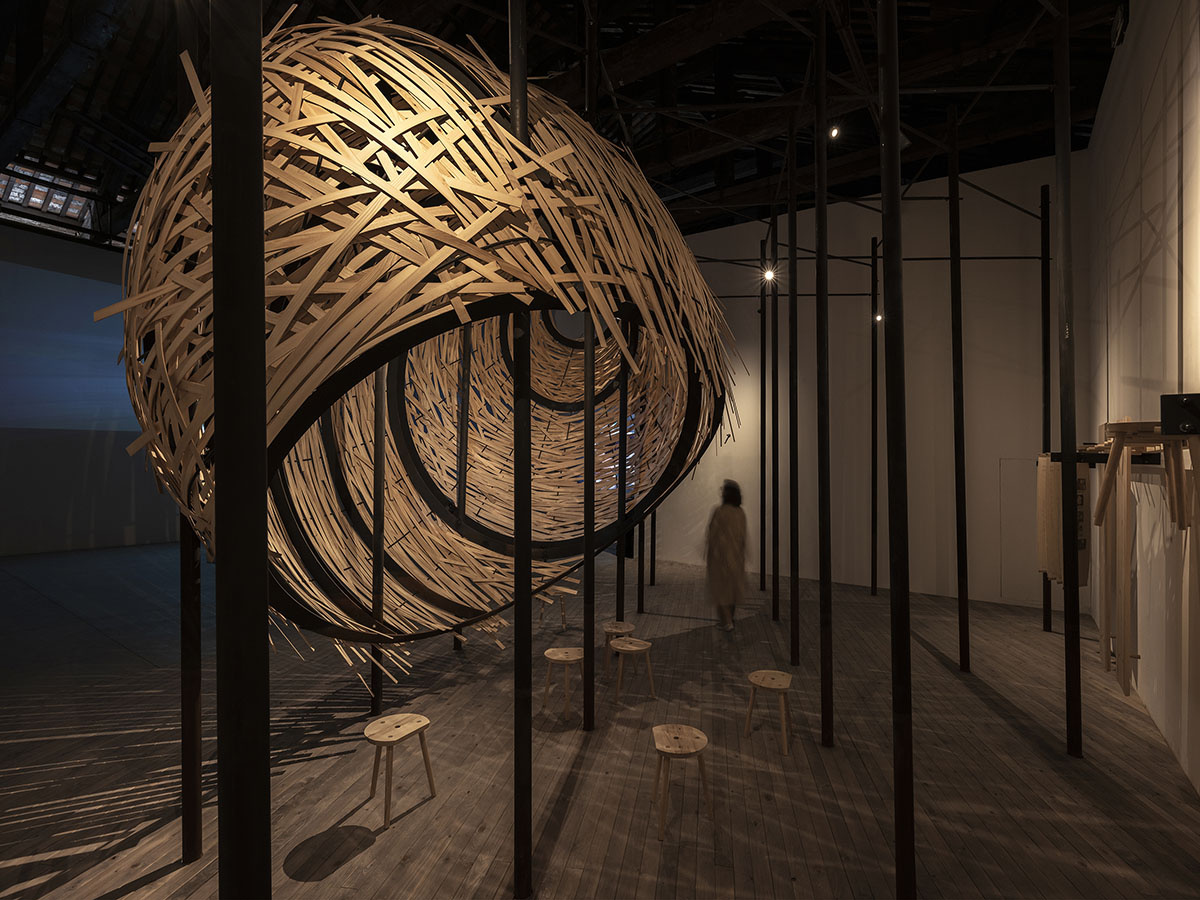
The pavilion has a distinct shape defined by woven ash wood, derived from a native of the wetlands, hovering within a regular grid.
Tonči Čerina stated that "both are interdependent, structurally supporting each other."
"It is not a literal memory or mimicry, but exists on the border of the known and the subconsciously recognizable, triggering desire to approach. It acts as a device to briefly change perspective, an embodiment of a theme better understood by an experience in space than mere statistical data."
"It breaks the habit of representing issues by known means. Repeating the same patterns will not change our behaviors," Čerina added.
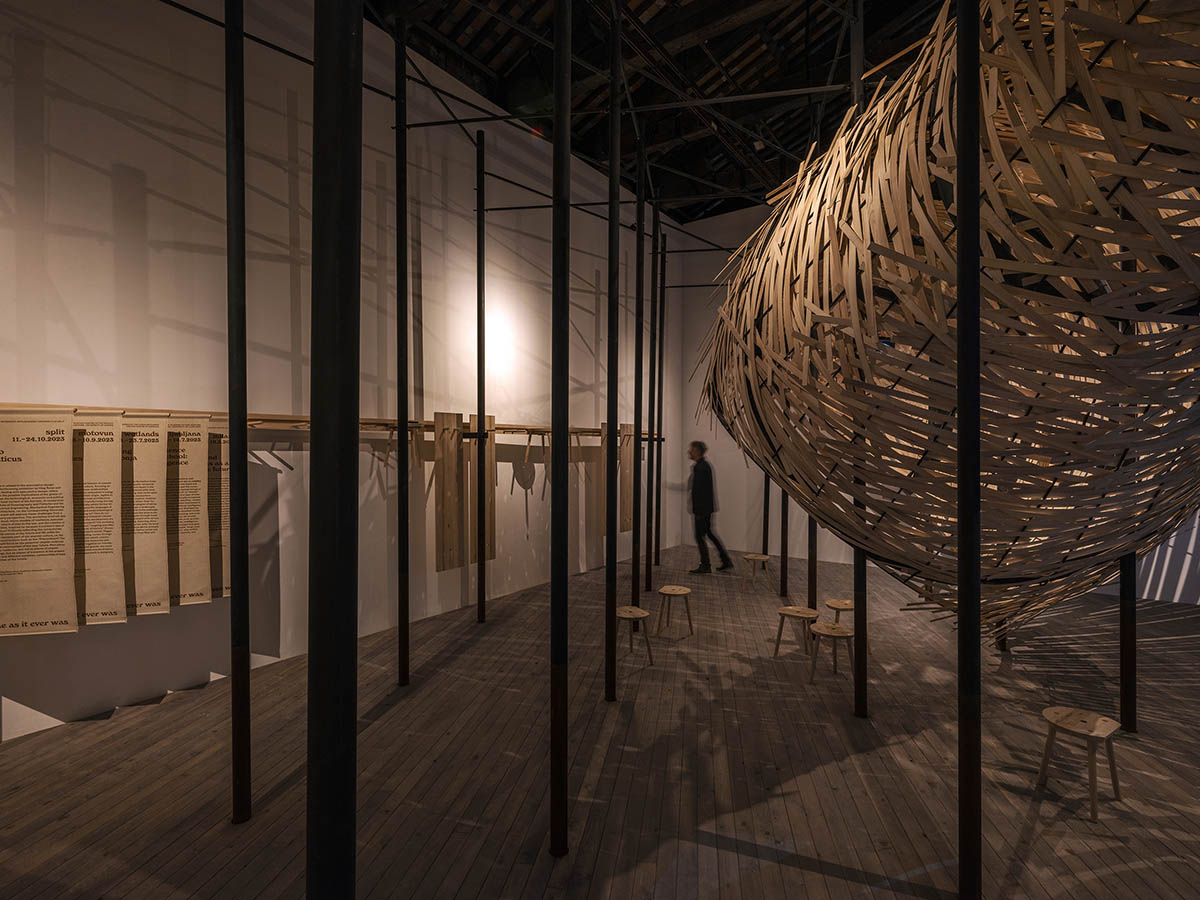
The theme of the pavilion is inspired from the Lonja Wetlands in Croatia, where the dynamic environment evolved from centuries of symbioses between the landscape in constant flux and the communities that adapted their lives to it.
In response to the theme of The Laboratory of the Future, the team has created a sculpture that becomes a backdrop for the discursive programme of the Croatian Pavilion, acting as "an ongoing laboratory documented in real time, focused on exploring futures in practice and education."
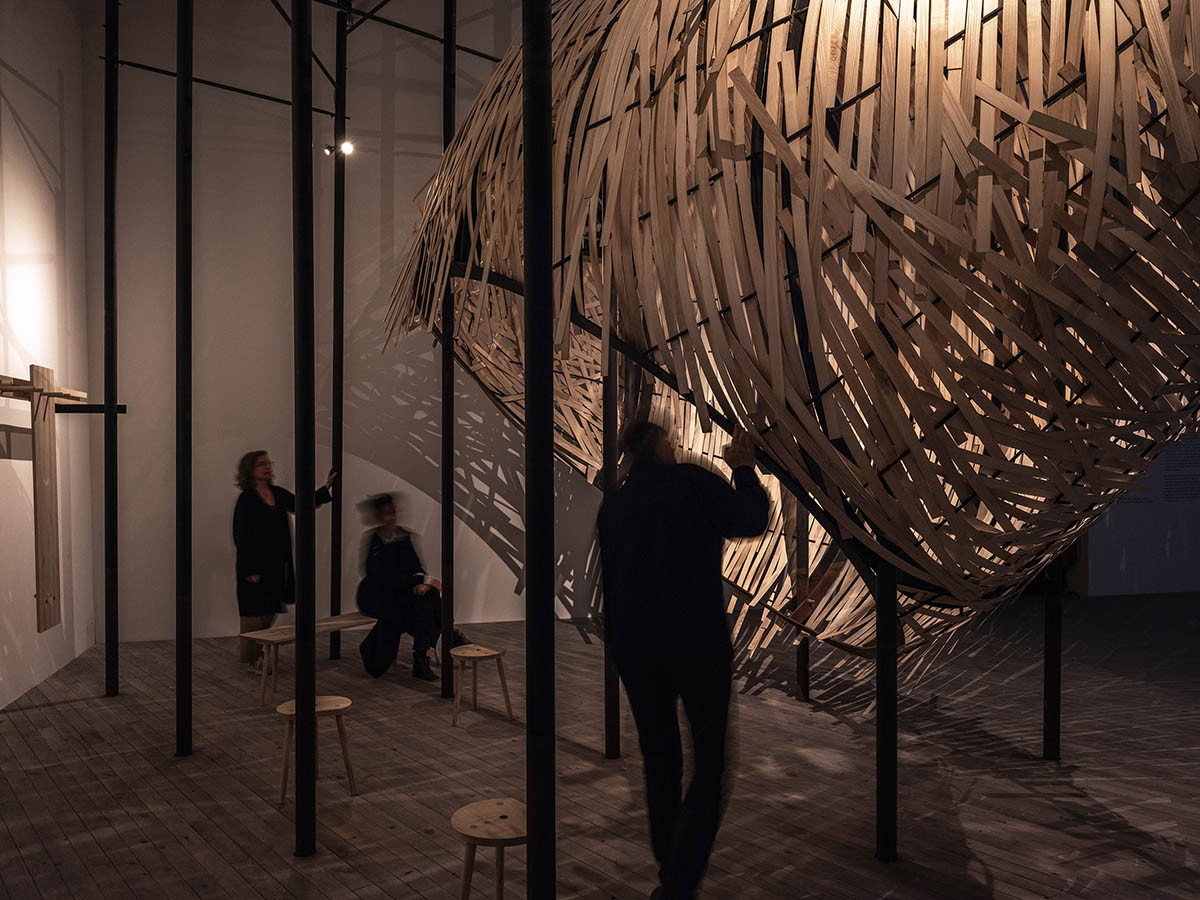
"Our Laboratory of the Future begins with a deep understanding of the interconnectedness among actors of all origins," stated the team.
Lonja Wetlands is one of Europe’s largest wetlands, situated in central Croatia around the rivers Sava and Lonja. With its biodiversity and traditions, Lonja Wetlands presents an environment of fragile equilibrium that undergoes radical changes over the course of a year.
Centuries of dynamic cohabitation of the wilderness, the domesticated life and the human created a distinct cultural heritage reflecting an everchanging landscape. Various transient beings move, migrate and travel through Lonja Wetlands. Here, the synchronicities of time depend on the viewpoint of the actors.
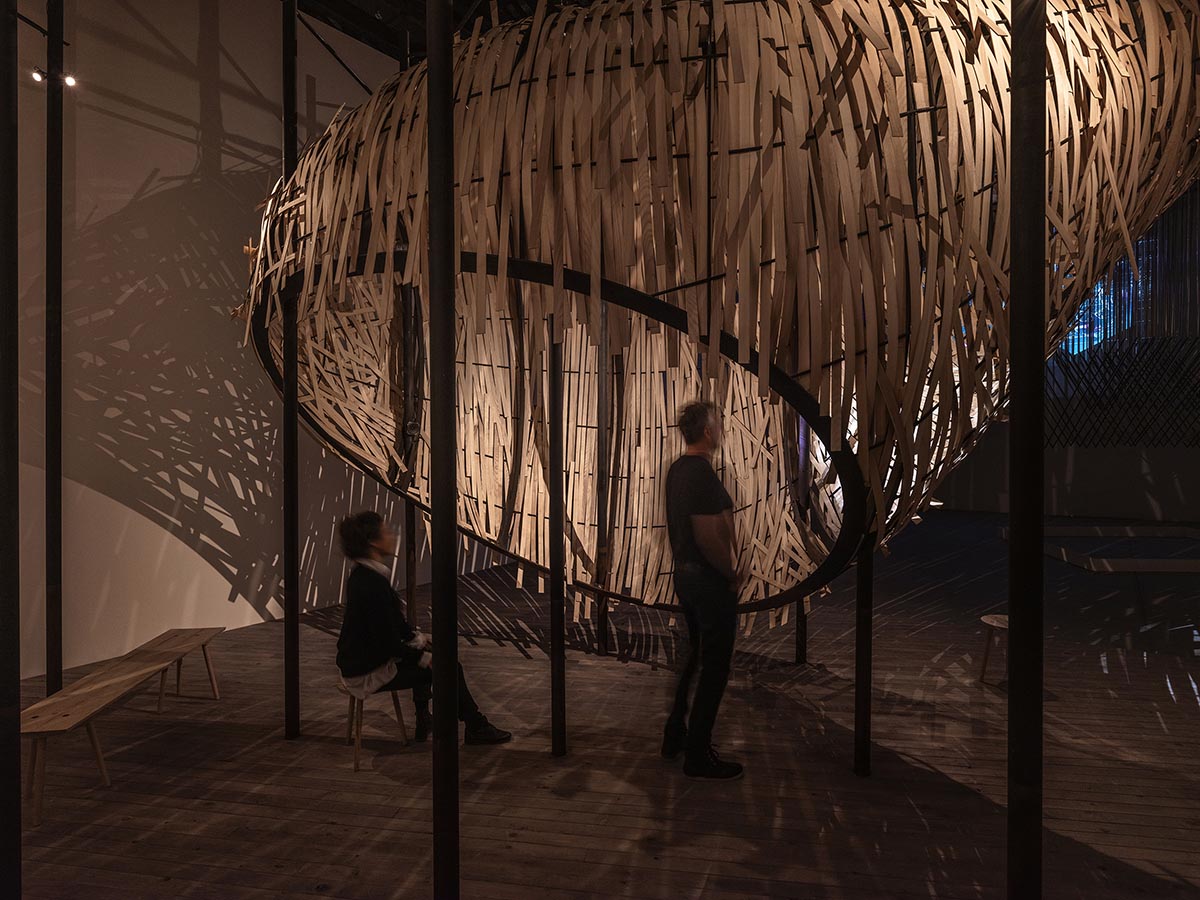
They are measured in seasons of grazing, annual intercontinental migrations of birds, daily migrations of people, seconds of visitor’s reactions, decades of movement of the meandering rivers and centuries of plants growing.
With the pavilion, the theme looks beyond the superficial traces of these systems, in the opposite direction of inevitable crises, speculating on possible harmonious futures.
The design team interprets wetlands as a lesson showing different possible future paths, alternatives, and models of cohabitation. "The realities of constant and ongoing crises and disasters urge us to build new types of resilience," the team emphasized.
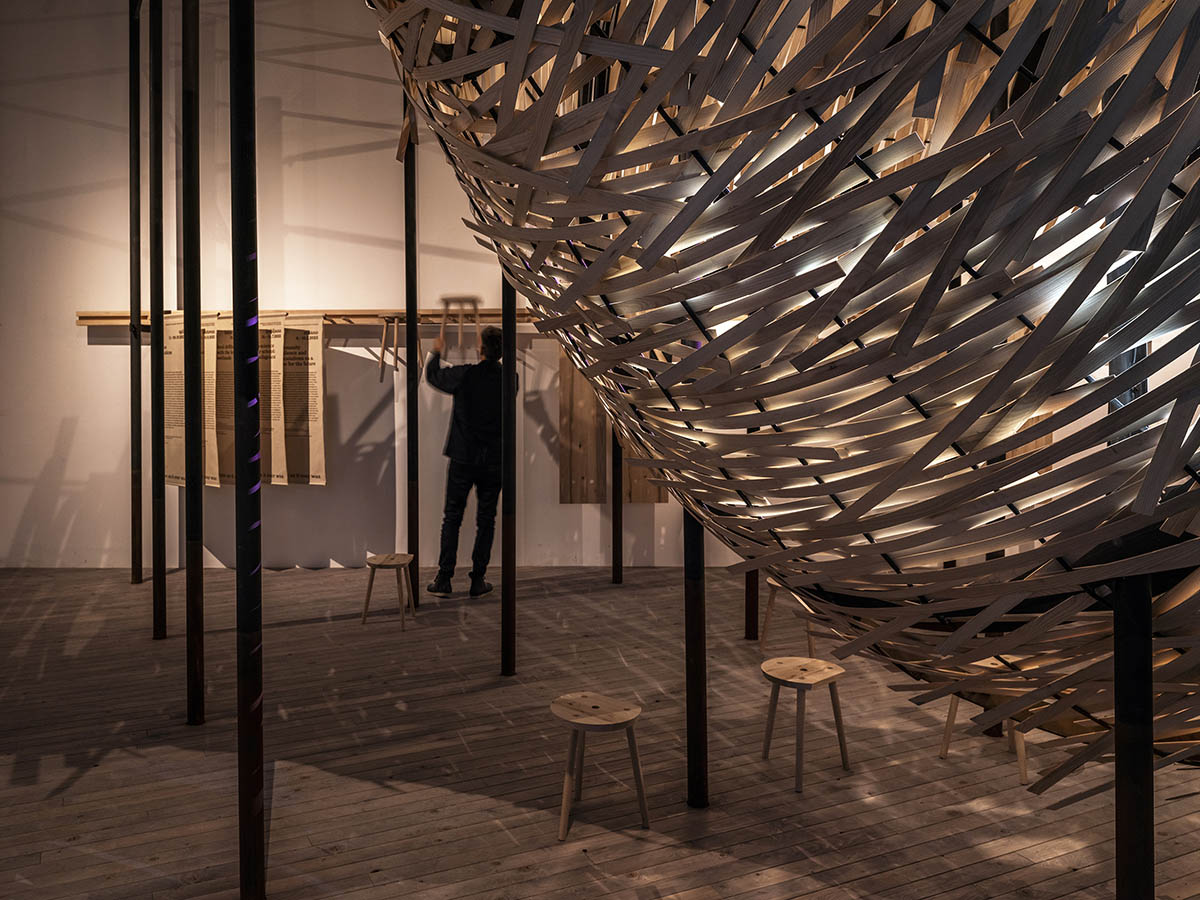
The curators explained that "by studying autonomous communities in peripheral regions, we are given direct insight into those who are used to living with nature, and not against it, with better chances at surviving in such futures."
"This path does not glorify an arcadian past yet shows an example of coexistence with changing cultures and behaviours."
The installation includes physical and virtual segments directly tied to the narrative of the existent visitor's infrastructure in Lonja Wetlands, treated as a device for understanding the connections between nature and culture.
This built infrastructure operates on a subliminal level and elementary recognition perceptible through collective memories, sampling and paraphrasing the familiar.
The network of the Croatian Pavilion welcomes talks and workshops that will take place on-site and off-site during the Venice Architecture Biennale 2023, with focus on acute issues through interaction between professionals, teachers, and students from various fields.
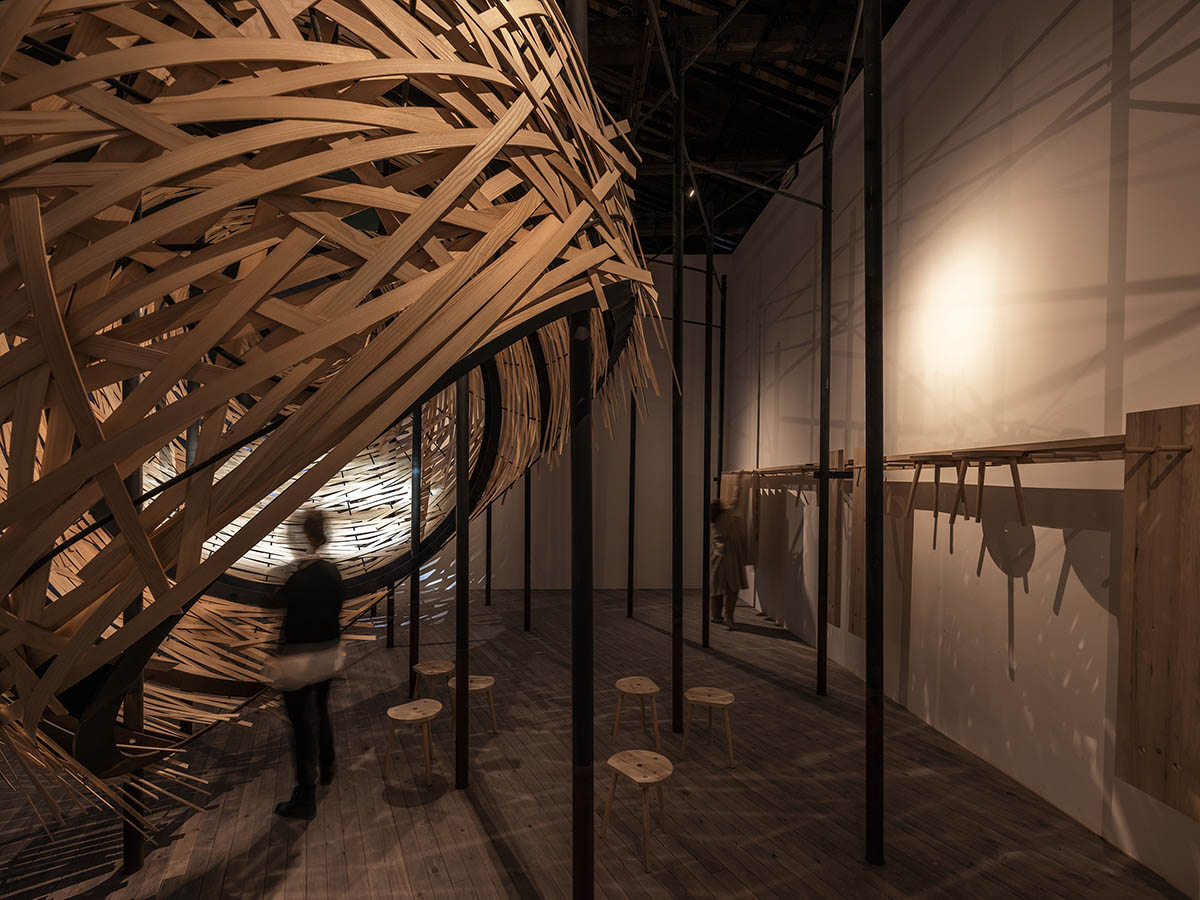
With this way, the curators will test the topics and future actions in the education of architects, designers and related disciplines – recognizing the multidisciplinary and transversal origin of skills engaged in caring for the future environment.
Responding to Lesley Lokko’s framing of the topic, the curatorial team invites and displays excerpts of a continuous interdisciplinary process aimed at fundamentally changing the approaches to spatial agency, realizing it through situated education, focused on alternative futures for those that remain.
A shift in understanding the relationships between actors within ecosystems relies on a transformation facilitated by education.
This discursive format of the Croatian Pavilion disperses the highlights and topics of the “Same as it Ever Was” project towards educational and local environments, extending its reach and aiming for meaningful reciprocity.
The workshops will take place in Venice, Ljubljana, Split, Motovun, Milan and Lonja Wetlands during the whole period of the Venice Architecture Biennale 2023.
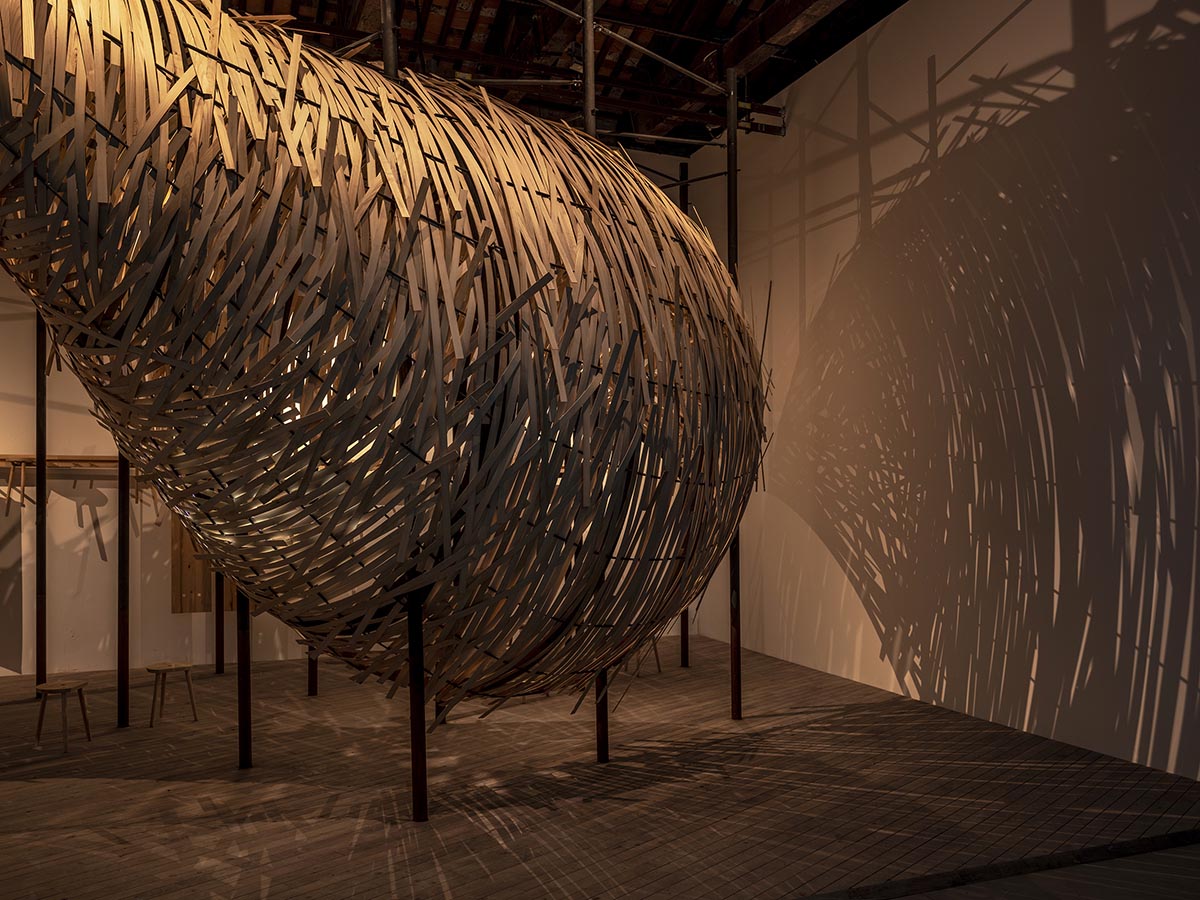
The discursive program started during the pre-opening of the 18th International Architecture Exhibition, with an opening discussion between Harriet Harriss (Pratt Institute), James Auger (Crap Futures, ENS Paris Saclay), and Martin Avila (Konstfack), moderated by Ivica Mitrović (SpeculativeEdu, University of Split).
The result of the program, alongside texts that will explore the topics further, will be published in a book to be promoted at the end of the Venice Architecture Biennale 2023, as a retroactive account of the discussions, workshops, case studies and reflections.
"Responding to Lesley Lokko’s framing of the topic, we invite and display excerpts of a continuous interdisciplinary process. We understood the topic as a call for a new approach to space, questioning canons, borders, formal languages we speak in. Our pavilion examines the relationship of what comes from nature and culture, blurring this divide," said Mia Roth, curator, and co-author of the Croatian Pavilion.
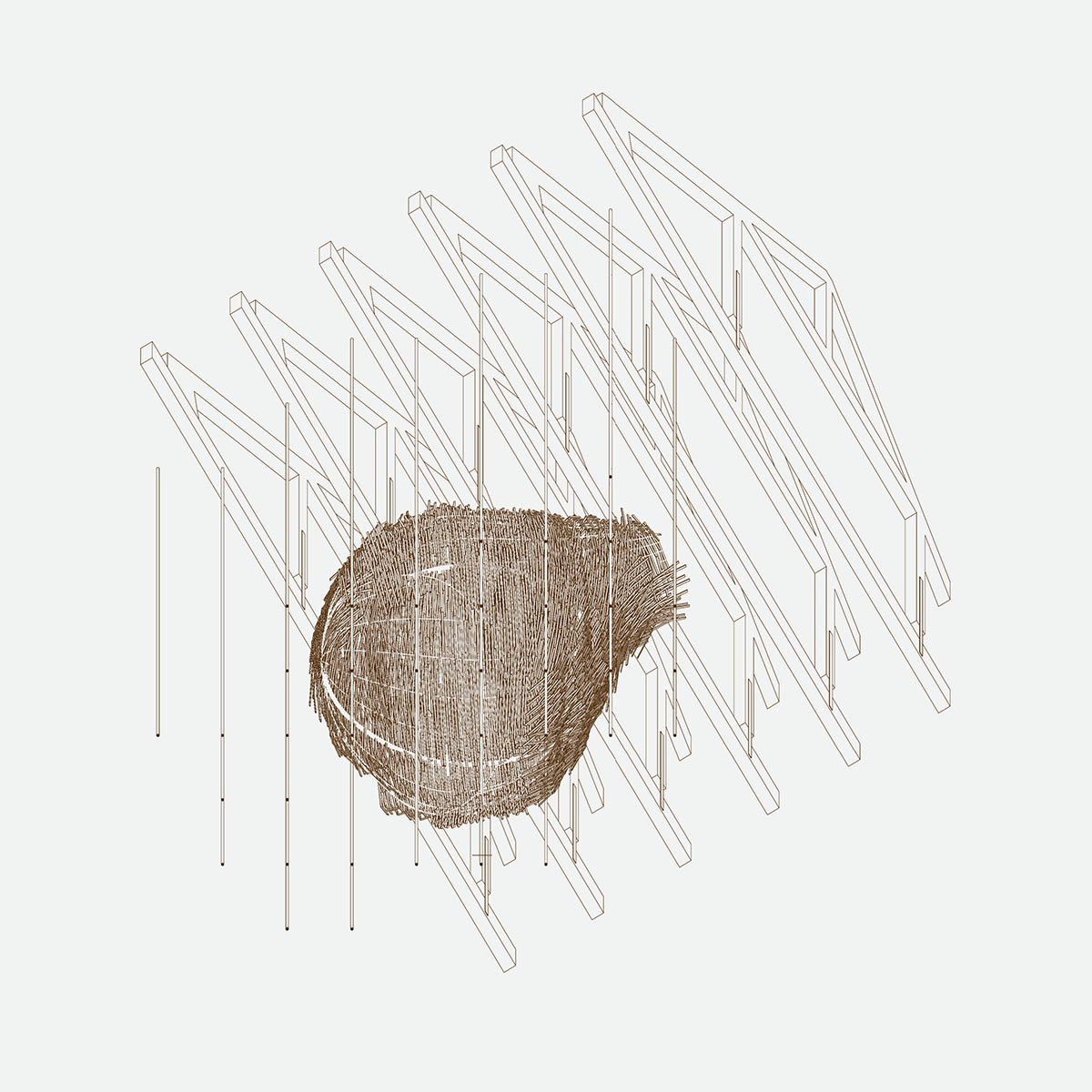
Axonometric drawing. Image courtesy of the Croatian Pavilion
"As a point of origin or an example, we took the Lonja Wetlands, a space presenting an environment of fragile equilibrium that undergoes radical changes over a year."
"Yet people have adapted to this change over centuries not by working against the flux but moving along with it. It is a lesson of resilience for the future, a departure point of designing coexistence between all species, living and inanimate nature, technology."
"It also asks how spaces convey messages, what facilitates understanding of phenomena or evolves from them. Learning new languages and approaches is realized through alternative future oriented, situated education," Roth added.
The Croatian Pavilion was commissioned by the Ministry of Culture and Media of the Republic of Croatia and organized by the Croatian Architects’ Association (CAA).
The Venice Architecture Biennale 2023 is taking place from Saturday 20 May to Sunday 26 November, 2023 at the Arsenale and Giardini venues. Curated by Lesley Lokko, this year's theme is The Laboratory of the Future in which the theme is investigating the African continent.
Read more about WAC's coverage about pavilions on Venice Architecture Biennale 2023. To see more pavilions from this year's biennale, you can also visit WAC's Instagram/Reels for exclusive videos.
All images © Bosnic+Dorotic unless otherwise stated.
> via Croatian Pavilion
ash wood Croatian Pavilion exhibition pavilion Venice Architecture Biennale
